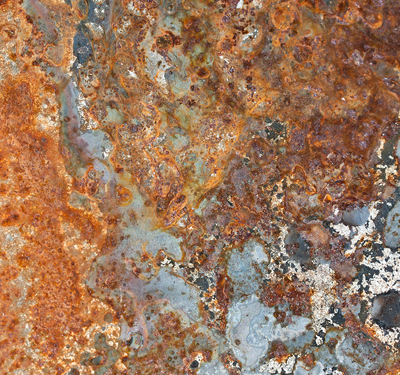

Chemical Water Treatment in Open Tower Systems
Posted in Fundamentals
In today’s world of expensive energy, it is more vital than ever for heat exchange equipment to be kept free of insulating deposits that promote high energy consumption. A typical insulating deposit is a formation of calcium, fungi, mold, algae slime or other minerals on a surface, separating or insulating it from the ability to efficiently transfer heat.
The four principal sources of these deposits in water – cooled systems are scale, corrosion, biological growths and sludge. These factors are important for another reason: they have a direct effect on energy usage and equipment life.
An open system is one that has contact with air. Cooling towers, chillers and condenser pumps are part of a typical open system. As the water falls from the top to the bottom of the cooling tower, it is in contact with air and therefore is considered open.
Treating the cooling tower water to minimize or eliminate the growth of bacteria or algae can be performed with the injection of chemicals. Several alternative methods of non-chemical water treatment also are available and will be discussed in other articles.
Scale
Scale is caused by the precipitation of calcium and other salts. It progressively narrows the pipe internal diameters and roughens tube surfaces, thereby impeding proper flow, and insulates surfaces meant to exchange heat.
Scale build–up also reduces the airflow through cooling towers by reducing the area in the tower honeycomb fill.
In chillers, scale translates into higher refrigerant head pressures, and a corresponding increase in power requirements and costs. For example, 1/8 inch of scale in a 100–ton refrigeration unit represents an electrical energy increase of 22% compared to the same size unit free of scale.
Corrosion
Dissolved gases, improper pH control, and the formation of micro organisms promote corrosion, which is the single most significant factor causing premature deterioration of HVAC equipment and piping. In its most insidious form, pitting is only revealed when the equipment or pipe fails. Failures of this type can be catastrophic, leading to costly downtime for repairs and equipment replacement, personal discomfort and even total plant shutdown.
Biological Growths
In addition to promoting corrosion, the uncontrolled multiplication of bacteria, algae and fungi results in biofilm formation on heat exchange surfaces. This has been recognized as an important contributor to reduced heat transfer efficiency in cooling water systems.
In fact, it has been demonstrated that because of the unique surface characteristics of biofilms, their insulating properties far exceed those of an equivalent thickness of scale or corrosion deposits.
Sludge
Under this heading are dirt, mud, sand, silt, clay, scale salts, and other particulates. They may be of airborne origin or may enter the system with the makeup water. Very often these suspended solids are tightly bound and held together by corrosion products and organic matter.
Abrasive sludge deposits can damage pump mechanical seals, rubber gaskets and control valve seals.
Solutions
The answer to the problems created by scale, corrosion, biofouling and sludge is a comprehensive water treatment program including scale and corrosion inhibitors, micro biocides and chemicals that maintain particulate materials in suspension coupled with adequate bleed off. A chemical controller will automatically regulate the injection of chemicals based on a water makeup meter. Makeup water is the water brought into the system to replace lost water, regardless of the cause of water loss.
Water is lost from a cooling tower system through evaporation, leaks in the system, overflow of the cooling tower sump, and “bleed off,” which is the intentional draining of a certain amount of water in order to decrease the buildup of solids in the system. In a poorly designed system, high winds can also blow some of the water out onto surrounding areas.
When water is evaporated or lost from a cooling tower, the solids and chemicals used to treat the tower remain in the system. When water is “bled” from the system, the chemicals lost through bleed must be replaced for the system to remain protected.
A certified chemical treatment company should be involved with the treatment of the cooling tower water. Daily and weekly testing should be done by your staff. You should always get a written report from your chemical treatment company after their monthly visit.
Rotation of the chemicals may be needed as bacteria can become immune over time if the same chemicals are used.
Ask questions of the water treatment company. What should the concentration of particulates be for the most efficient operation? What should happen if there are deposits on the tower fill?
Low cost budget chemicals may not be the best answer to your water treatment needs. Your cooling tower and chiller system is extremely expensive to operate. Think of the cost to replace the system because of scale buildup or corrosion attacks. A good chemical water treatment program is critical to the maintaining of your equipment.

 Previous STORY
Previous STORY